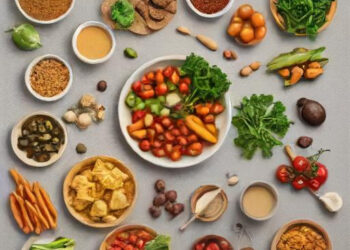-Mugdha Pradhan

In the past three decades, the Indian economy has seen massive growth- growth that resulted in drastic changes in our lifestyles. With an increase in buying power, we eat out more often, have greater access to fatty junk food and sugary drinks. To add to this with most of us are under constant stress for time, our traditional whole food eating habits have been replaced with highly convenient processed foods that are nutritionally poor but high in fat and refined carbohydrates. Along with this high-fat calorie-dense diet, there’s been a decrease in physical activity and an increase in sedentary activities thanks to TV and mobile phones that have pervaded most of our lives. This has led to a higher incidence of chronic diseases including diabetes.
A lot of people blame their genes when it comes to diabetes, but genes have a very negligible role to play here. Even if every member of your family is diabetic, you could easily prevent becoming diabetic if you take care of what you eat. Similarly, maybe there’s not a single diabetic person in your family but you could easily earn the distinction of being the first one if you eat a diet high in fat and animal protein. Diabetes and insulin are not a mystery, no one suddenly wakes up with diabetes one fine day. Diabetes is a silently progressing disease caused by insulin resistance
How does Insulin resistance lead to Diabetes?
Insulin is the hormone that helps transport glucose from your bloodstream into your cells so that your cells can use it for making energy. It is literally the key that opens your cells up to receive glucose. Insulin resistance is a condition where your cells resist insulin and refuse to open up to it.
Why?
Our cells also store small quantities of fat to be used as emergency energy stores. This is what has saved the human race when there were episodes of famine. This fat is called intramyocellular fat. It’s a good back-up system to have. 
The problem? The quantity of intramyocellular fat within your cells determines if your cells will open up to insulin or not. Too much fat in the cell and insulin (along with glucose) is not invited in. When these cells don’t open, glucose has no place to go and it starts floating around in your bloodstream. If the amount of floating blood glucose is high enough, blood tests can detect it and you’ll be handed a diabetes diagnosis. What causes high levels of intramyocellular fat? Excess dietary fat. If you have a diet that’s high in fat, it’s all going to get absorbed and stored in your cells as an emergency back-up. Once that happens, your cells refuse to open up to insulin and you end up with diabetes. Yes. It is fat and not carbs/fruits/honey/rice that is responsible for diabetes.
How can diabetes be managed/ prevented in simple 2 steps?
Ditch the fat– Research has shown that reducing dietary fat has a tremendous impact on lowering insulin resistance. We have seen this with every single diabetic and prediabetic patient that has come to us. Simply cutting fat from the diet is enough to help your body start the healing process. Avoid all refined fats (cooking oils, ghee) and have limited quantities of fatty vegetables like avocado and coconut and limited quantities of nuts and seeds. While you are at it, cut out processed food too as it’s high in fat and refined sugars.
Switch to a plant-based diet– There’s overwhelming evidence that shows increasing your intake of fruits, starchy vegetables, non-starchy vegetables, legumes, and intact whole grains has tremendous insulin-sensitizing effects. Animal products are high in fat and contribute towards worsening insulin resistance, and avoiding them will help you reverse diabetes in faster.
Should diabetics cut out on sweet food? Not at all. As long as refined sugar and jaggery are avoided, they can enjoy naturally sweet foods like fruits, dates, sugar cane too. In fact, in the Thrive Life, we have some amazing dessert recipes that are absolutely safe for diabetics.
(The author is a nutritionist and the founder of Thrive Life. Views are her own)







